Home>diy>Home Improvement>Where To Start With House Renovation


Home Improvement
Where To Start With House Renovation
Modified: March 25, 2024
Looking to renovate your house? Discover where to start with home improvement projects and get expert tips in our comprehensive guide.
(Many of the links in this article redirect to a specific reviewed product. Your purchase of these products through affiliate links helps to generate commission for Storables.com, at no extra cost. Learn more)
Introduction
Welcome to the world of home renovation! Whether you’re a new homeowner looking to personalize your space or a seasoned homeowner seeking to update and enhance your living environment, embarking on a house renovation project can be both exciting and overwhelming. From minor cosmetic changes to major structural overhauls, there are countless possibilities to transform your house into your dream home.
However, before diving headfirst into the world of construction and remodeling, it’s crucial to have a solid plan in place. A well-thought-out renovation project can not only increase the value of your property but also improve your quality of life by creating a space that truly reflects your style and meets your needs.
This comprehensive guide will walk you through the steps necessary to successfully navigate the renovation process, from start to finish. By following these guidelines, you’ll be better equipped to make informed decisions, establish realistic goals, and ensure a smooth and successful renovation journey.
Before you roll up your sleeves and grab your toolkit, take a moment to reflect on your motivations for renovating. Are you looking to update the aesthetic of your space, increase functionality, or address specific issues such as outdated plumbing or electrical systems? Understanding your needs and goals will help you prioritize tasks and allocate resources accordingly.
Another critical aspect of any renovation project is budgeting. Determine how much you’re willing to spend and identify areas where you’re willing to compromise. Allocating funds wisely can help you stay on track financially and avoid unnecessary stress along the way. Remember to factor in unexpected costs and leave room for contingencies.
Once you have a clear understanding of your goals and budget, it’s time to decide whether you’ll tackle the project yourself or enlist the help of professionals. DIY renovations can be cost-effective and rewarding, but they require time, skill, and knowledge. Hiring professionals, on the other hand, can ensure a higher level of expertise and minimize the risk of costly mistakes. Consider your skill level, available time, and the complexity of the project when making this decision.
Planning and designing are crucial stages of the renovation process. Create a detailed plan that outlines the desired changes and consider how they will fit within the existing layout and structure of your home. This step involves researching design trends, gathering inspiration, and consulting with professionals or online resources to generate ideas and make informed choices. Remember to think long-term and consider how the renovations will impact the functionality and resale value of your home.
Before commencing any construction work, it’s essential to obtain the necessary permits and approvals. Building codes and regulations vary across locations, so consult with your local authorities to ensure compliance. Failing to obtain permits can result in fines, delays, and even legal issues down the line.
With the paperwork sorted, it’s time to roll up your sleeves and begin the renovation journey. In the next sections, we’ll explore the various stages of a house renovation project, including demolition, plumbing and electrical upgrades, flooring and wall treatments, painting and finishing, and installing fixtures and appliances. Additionally, we’ll touch on exterior renovations and the importance of final inspections and clean-up.
So, let’s get started on this exciting journey of transforming your house into your dream home. With careful planning, sound decision-making, and a dose of patience, your house renovation project will be a success.
Key Takeaways:
- Planning and budgeting are crucial for a successful house renovation. Assess your needs, set a realistic budget, and prioritize safety and quality to achieve a transformative and rewarding renovation journey.
- Whether hiring professionals or taking the DIY route, careful planning, attention to detail, and adherence to regulations are essential. From exterior renovations to final inspections, each step contributes to creating a space that reflects your style and enhances your quality of life.
Read more: Where To Start Home Renovations
Assessing Your Needs and Goals
Before diving into a house renovation project, it’s crucial to assess your needs and goals. Understanding what you hope to achieve with the renovation will help you prioritize tasks and make informed decisions throughout the process.
Start by evaluating your current living space. Take note of any areas that feel cramped, outdated, or inefficient. Consider your lifestyle and the needs of your household. Do you need more storage space? Is your kitchen layout functional? Are the bathrooms in need of an upgrade? Taking stock of these aspects will help you identify the areas that require attention.
Next, determine your goals for the renovation. Are you seeking cosmetic changes to update the look and feel of your home? Perhaps you’re looking to improve functionality and optimize the use of space. Maybe you have specific issues, such as leaky plumbing or outdated electrical systems, that need to be addressed. Understanding your goals will guide your decision-making process as you prioritize what needs to be done.
Consider how the renovation will impact your daily life and the long-term value of your home. Are you planning to stay in the house for years to come, or are you renovating with the intention of selling in the near future? This will influence the scope and scale of your project, as well as the budget allocated to it.
Take the time to research design trends and gather inspiration from various sources, such as home decor magazines, websites, and social media platforms like Pinterest and Instagram. This will help you develop a vision for your renovated home and narrow down your style preferences, be it modern, traditional, minimalist, or eclectic.
Don’t forget to involve other members of your household in the decision-making process. Renovations can be disruptive and involve changes that affect everyone who lives in the space. Consulting with family members and incorporating their input will help ensure that the renovation meets the needs and tastes of the entire household.
It’s also important to consider your budget when defining your needs and goals. Determine how much you’re willing to spend on the renovation and identify areas where you’re willing to compromise. Prioritizing your needs and wants will help you allocate your resources effectively and prevent overspending.
Remember that home renovations can be dynamic processes, and adjustments may need to be made along the way. As you start the renovation journey, stay open to new ideas and be flexible with your plans. This will ensure that you can adapt to any unexpected challenges or opportunities that may arise during the renovation process.
By assessing your needs and goals thoroughly, you’ll be better equipped to plan and execute a successful house renovation project. Whether you’re looking to update your home’s aesthetic, improve functionality, or address specific issues, defining your goals will guide your decision-making process and set the stage for a transformative renovation journey.
Setting a Budget
Setting a budget is an essential step in any house renovation project. It ensures that you have a clear understanding of your financial limits and helps you make informed decisions throughout the renovation process. Here are some key considerations when setting a budget for your renovation:
1. Evaluate Your Finances: Start by examining your current financial situation. Consider your income, savings, and any available funds you can allocate towards the renovation. It’s important to establish a realistic budget that won’t strain your finances or put you in debt.
2. Research the Costs: Take the time to research the average costs of materials and labor for the type of renovation you’re planning. This will provide you with a rough estimate of how much you can expect to spend. Keep in mind that prices can vary depending on the location, the complexity of the project, and the quality of materials.
3. Prioritize Your Needs and Wants: Determine what aspects of the renovation are non-negotiable and which ones you’re willing to compromise on. This will help you allocate your budget accordingly. For instance, if your goal is to upgrade your kitchen, allocate a larger portion of your budget to high-quality appliances and cabinetry while compromising on other areas like flooring or lighting.
4. Consider Hidden Costs: Remember to factor in any potential hidden costs that may arise during the renovation process. This could include unexpected repairs, permit fees, or additional design changes. It’s a good idea to set aside a contingency fund of approximately 10-15% of your total budget to account for these unforeseen expenses.
5. Decide on Financing Options: Depending on the scope of your renovation, you may need to explore financing options. Options include personal loans, home equity loans, or lines of credit. It’s important to carefully weigh the pros and cons of each option and choose one that aligns with your financial goals and capabilities.
6. Get Multiple Quotes: When hiring professionals or contractors, don’t settle for the first quote you receive. Obtain multiple quotes from different providers to ensure you’re getting a fair price. This will also give you an opportunity to compare services and choose the best fit for your project.
7. Track Your Expenses: Throughout the renovation process, keep track of your expenses. Create a spreadsheet or use budgeting apps to monitor your spending and compare it against your allocated budget. This will help you stay on track and make adjustments if necessary.
Setting a budget for your house renovation project is a crucial step that sets the foundation for a successful and stress-free experience. It allows you to allocate your resources effectively, make informed decisions, and avoid any financial surprises along the way. By carefully evaluating your finances, prioritizing your needs and wants, and considering hidden costs, you can embark on your renovation journey with confidence, knowing that you have a realistic and achievable budget in place.
Hiring Professionals vs DIY
One important decision you’ll need to make when embarking on a house renovation project is whether to hire professionals or take the DIY route. Both options have their advantages and considerations, so let’s explore the factors to consider when deciding between hiring professionals and tackling the renovation yourself:
1. Skill and Expertise: Consider your level of skill and expertise in the specific renovation tasks you need to undertake. Some renovations, such as plumbing or electrical work, require specialized knowledge and should be handled by professionals. If you’re not confident in your abilities or lack the necessary skills, it’s best to hire an experienced professional who can ensure the work is done safely and correctly.
2. Time and Availability: Renovations can be time-consuming and require a significant commitment. Assess the amount of time you’re able and willing to devote to the project. If you have a busy schedule or limited availability, hiring professionals can save you time and stress. They have the expertise and resources to complete the renovation efficiently, allowing you to focus on other aspects of your life.
3. Cost Considerations: While hiring professionals may come with a higher upfront cost, it’s essential to consider the long-term financial implications. Mistakes made during DIY renovations can end up costing more to fix in the long run. Professionals have the knowledge and experience to do the job right the first time, minimizing the risk of costly errors. Additionally, they often have access to wholesale pricing on materials, which can help offset their fees.
4. Permits and Regulations: Depending on the scope of your renovation, you may need to obtain permits and comply with building codes and regulations. Professionals are familiar with the legal requirements and can navigate the permitting process for you. DIY renovators need to make sure they thoroughly research and understand the necessary permits and regulations to avoid legal issues down the line.
5. Project Complexity: Consider the complexity of your renovation project. If it involves structural changes or requires a high level of expertise, it’s usually best to hire professionals. They have the knowledge and experience to handle complex projects safely and effectively. Smaller, more manageable projects, such as painting or minor cosmetic changes, can be suitable for DIY renovation.
6. Warranty and Insurance: When you hire professionals, they often provide warranties for their work. This means that if any issues arise after the renovation, they will come back and fix them. Additionally, professionals carry liability insurance, which protects you in case of accidents or damage during the renovation process. DIY projects do not come with this level of protection, so it’s important to weigh the risk and potential costs involved.
Ultimately, the decision to hire professionals or take the DIY route depends on your personal circumstances and the complexity of the renovation. It’s essential to assess your skills, availability, and budget before making a choice. In some cases, a combination of both can be the best approach. For example, you may hire professionals for specialized tasks while tackling simpler projects yourself.
Remember, successful renovations require careful planning, attention to detail, and a realistic assessment of your capabilities. Whether you choose to hire professionals or take the DIY route, ensure that you prioritize safety, quality, and achieving your desired outcome. With proper planning and execution, your house renovation project can be a rewarding and transformative experience.
Planning and Designing
When it comes to house renovations, planning and designing are crucial stages that lay the foundation for a successful project. Taking the time to carefully plan and design your renovation will ensure that you optimize your space, stay within budget, and achieve your desired outcome. Here are some key considerations during the planning and designing phase:
1. Research and Gather Inspiration: Start by conducting research and gathering inspiration from various sources such as home decor magazines, online platforms, and even visiting model homes. This will help you identify design trends, styles, and features that resonate with your vision for your renovated home.
2. Define Your Design Style: From modern and minimalist to traditional and eclectic, there are countless design styles to choose from. Assess your preferences and determine the overall look and feel you want to achieve in your renovated space. This will help you guide your decisions when selecting materials and finishes.
3. Work within Existing Layout: When planning your renovation, consider the existing layout and structure of your home. Think about how the space flows and how you can optimize it to improve functionality. Be mindful of load-bearing walls, plumbing and electrical systems, and any other structural considerations that may impact your plans.
4. Consider Long-Term Needs: While it’s important to focus on your current needs and desires, also consider any future needs that may arise. Thinking long-term will help you make decisions that will allow your renovated space to remain functional and relevant for years to come.
5. Create a Detailed Plan: Develop a detailed plan for your renovation project. Consider every aspect, from room layouts to fixture placements. This will help you stay organized and ensure that you don’t overlook any important details. Additionally, it will make it easier to communicate your vision to professionals involved in the project.
6. Set a Realistic Budget: During the planning phase, it’s essential to establish a realistic budget. Determine how much you’re willing to spend on each aspect of the renovation, including materials, labor, and any design features. This will help you make informed decisions and ensure that you don’t overspend.
7. Seek Professional Advice: If you’re unsure about any aspect of your renovation plans, consider consulting with professionals such as architects, interior designers, or contractors. They can provide valuable advice and insights, helping you optimize your space and achieve a cohesive design.
8. Consider Energy Efficiency: In today’s environmentally conscious world, energy efficiency is an important consideration in renovations. Explore options for eco-friendly materials, appliances, and energy-efficient systems. Not only will this help reduce your environmental impact, but it can also lead to long-term cost savings on energy bills.
9. Plan for Storage: Adequate storage is often overlooked but essential for a well-functioning home. Consider your storage needs and plan for built-in cabinets, closets, and other storage solutions. This will help keep your space organized and free of clutter.
10. Consult with Contractors and Tradespeople: If you’re working with professionals, involve them early in the planning phase. Their expertise can help you make educated decisions and ensure that your plans are feasible and compliant with building codes and regulations.
Remember, the planning and designing phase sets the stage for the rest of your renovation journey. Take the time to envision your ideal space and plan every detail carefully. With thorough planning and thoughtful design choices, you’ll be well on your way to transforming your house into your dream home.
Read more: Where To Start Building A House
Obtaining Permits and Approvals
Obtaining permits and approvals is a crucial step in any house renovation project. It ensures that your renovations comply with local building codes, zoning regulations, and safety standards. Failing to obtain the necessary permits can result in fines, delays, and even legal issues. Here are some key considerations when navigating the permit and approval process:
1. Research Local Requirements: Building codes and regulations vary from one jurisdiction to another, so it’s important to familiarize yourself with the requirements in your area. Contact your local building department or visit their website to gather information on the permits and approvals needed for your specific renovation project.
2. Determine Permit Types: Depending on the nature of your renovation, you may need different types of permits. This could include building permits, electrical permits, plumbing permits, or permits for structural changes. Each permit has its own application process and fee schedule, so ensure you understand the requirements for each.
3. Engage Professionals if Necessary: Some renovation projects require the involvement of licensed professionals, such as architects or engineers. Their expertise may be needed to draft plans, prepare permit applications, or conduct inspections. Engage these professionals early on to ensure compliance with regulations.
4. Prepare Documentation: Before applying for permits, gather all the necessary documentation. This may include architectural plans, engineering reports, contractor licenses, and proof of insurance. Ensure that your documentation meets the requirements of the building department to avoid any delays in the approval process.
5. Submit Permit Applications: Once you have gathered all the required documentation, complete the permit applications and submit them to the appropriate authorities. Be prepared to pay application and processing fees, which vary depending on the scope of your project.
6. Follow Review and Inspection Processes: Once your application is submitted, it will undergo a review process to ensure compliance with regulations. This may involve review by various departments, such as planning, engineering, or fire services. Depending on the complexity of your project, there may be multiple review cycles before approval is granted.
7. Address Feedback and Revisions: If feedback or revisions are requested during the review process, address them promptly and make the necessary revisions to your plans or documentation. Clear communication and responsiveness will help expedite the approval process.
8. Schedule Inspections: Once your permit is approved, you’ll need to schedule inspections at various stages of the renovation project. Inspections ensure that the work is being carried out according to the approved plans and complies with safety standards. Common inspection points include foundation, framing, electrical, plumbing, and final inspections.
9. Maintain Documentation: Throughout the renovation process, keep all permit-related documentation, including the approved plans, permits, and inspection reports. These documents serve as proof of compliance and may be required when selling your property or during future renovation projects.
10. Utilize Online Tools and Resources: Many local building departments offer online tools and resources to streamline the permit application process. Take advantage of these tools to submit applications, track the progress of your permits, and schedule inspections conveniently.
Obtaining permits and approvals may seem like a cumbersome process, but it is a crucial step in ensuring that your house renovation is safe, compliant, and in accordance with local regulations. By doing the necessary research, preparing the required documentation, and following the proper processes, you can navigate the permit and approval process smoothly and confidently.
Demolition and Structural Work
Demolition and structural work are significant stages in a house renovation project. Whether you’re creating an open-concept layout, removing load-bearing walls, or addressing structural issues, these tasks require careful planning and execution. Here are some key considerations when tackling demolition and structural work:
1. Safety First: Before starting any demolition work, prioritize safety. Wear appropriate personal protective equipment (PPE), such as gloves, goggles, and a dust mask, to protect yourself from hazards. Secure the work area to prevent access by unauthorized individuals and ensure that utilities, such as gas, water, and electricity, are safely disconnected or rerouted.
2. Professional Assessment: Engage a licensed professional, such as a structural engineer or architect, to assess the structural integrity of your home and provide recommendations for any necessary changes. Their expertise will ensure that the structural modifications you plan to make are safe and compliant with building codes.
3. Obtain Necessary Permits: Structural modifications usually require building permits. Make sure you have obtained the required permits before starting any work. These permits ensure that the work is carried out according to approved plans, and they provide the necessary inspections to ensure compliance with safety standards.
4. Demolition Strategy: Develop a demolition strategy based on the scope of work. Start by removing non-load-bearing walls, fixtures, and finishes before moving on to structural components. Plan the sequence to minimize disruption and ensure a smooth workflow. Be mindful of dust containment measures to prevent debris from spreading to other areas of the house.
5. Professional Demolition Services: Depending on the scale of the demolition work, consider hiring professionals. They have the experience, equipment, and expertise to safely and efficiently carry out the demolition. Professionals can also help with waste disposal, ensuring environmentally responsible disposal of debris.
6. Structural Reinforcement: If you’re removing load-bearing walls or making significant structural changes, proper reinforcement is essential. This may involve installing beams, columns, or other structural elements to ensure the integrity and stability of the building. Consult with a structural engineer to determine the appropriate reinforcement methods for your specific project.
7. Plumbing and Electrical Considerations: Demolition and structural work may impact existing plumbing and electrical systems. Plan ahead and consult with licensed professionals to reroute or modify these systems as needed. Ensure that all modifications comply with local building codes and obtain the necessary permits for any electrical or plumbing work.
8. Dealing with Surprises: During demolition and structural work, it’s not uncommon to encounter unexpected surprises, such as hidden structural issues or deteriorated materials. Be prepared for these possibilities by allocating a contingency budget and being flexible in your timeline. Address any unforeseen issues promptly to avoid further complications or delays.
9. Waste Management: Proper waste management is crucial during demolition. Follow local regulations for the disposal of construction debris, and consider recycling or salvaging materials whenever possible. Dispose of hazardous materials, such as asbestos or lead-based paint, following specific guidelines to protect your health and the environment.
10. Inspections and Certifications: Once the structural work and demolition are completed, schedule inspections to ensure compliance with building codes. Inspectors will assess the work and issue certifications, providing assurance that the modifications meet safety standards. Keep all documentation, including inspection reports and certifications, for future reference.
Demolition and structural work require careful planning, adherence to safety protocols, and compliance with building codes. By engaging professionals, obtaining necessary permits, and following proper procedures, you can confidently tackle these essential stages of your house renovation. Properly executed demolition and structural work will set the stage for the rest of your project, ensuring a solid foundation for the transformation of your home.
Start by creating a detailed plan and budget for your renovation. Assess the condition of your house and prioritize the areas that need the most attention. Research and gather inspiration for design ideas and materials.
Plumbing and Electrical Upgrades
Plumbing and electrical upgrades are crucial aspects of any house renovation project. Upgrading these systems not only improves the functionality and efficiency of your home but also ensures safety and compliance with current building codes. Here are some key considerations when undertaking plumbing and electrical upgrades:
1. Engage Licensed Professionals: Plumbing and electrical work require specialized knowledge and expertise. It is strongly recommended to engage licensed professionals who have the necessary skills and experience to ensure the work is done safely and in compliance with regulations. Professional contractors can also provide valuable advice and guidance on the best approaches for your specific project.
2. Assess Existing Systems: Before proceeding with upgrades, assess the condition of your existing plumbing and electrical systems. Determine if there are any issues, such as leaks, outdated materials, or faulty wiring. Identify areas that may need immediate attention and prioritize them accordingly.
3. Plan for Future Needs: Consider the long-term needs of your household when upgrading plumbing and electrical systems. Anticipate any future changes or additions that may require additional capacity. This proactive approach can help save time and money by avoiding the need for subsequent upgrades.
4. Plumbing Upgrades: Upgrading the plumbing system may involve replacing aging pipes, fixtures, and fittings. Consider factors such as water pressure, energy efficiency, and water conservation when selecting new plumbing fixtures. Upgrading to low-flow toilets, faucets, and showerheads can help reduce water usage and lower utility bills in the long run.
5. Electrical Upgrades: Electrical upgrades often involve rewiring, replacing outdated electrical panels, and installing additional outlets or lighting fixtures. Consider your electrical needs, such as the number of appliances, electronic devices, and lighting requirements. Ensure that the electrical system has the capacity to handle the load and that new installations meet safety standards.
6. Compliance with Building Codes: Work closely with professionals to ensure that all plumbing and electrical upgrades meet local building codes and regulations. This includes obtaining the necessary permits, scheduling inspections, and ensuring that the work is done in compliance with safety standards. Failure to comply with codes can lead to hazards, future complications, or legal issues.
7. Budget Considerations: Plumbing and electrical upgrades can vary significantly in cost depending on the scope of the project and the materials used. It’s important to allocate a realistic budget that takes into account the quality of materials, labor costs, permits, and any unforeseen expenses. Consulting with professionals can help you determine a reasonable budget based on your specific needs and requirements.
8. Coordination and Timing: Proper coordination between plumbers, electricians, and other tradespeople involved in the renovation is essential to ensure a seamless process. Plan the timing of plumbing and electrical upgrades carefully to minimize disruption to other renovation work and to daily activities in your home.
9. Energy Efficiency: Consider energy efficiency when undertaking plumbing and electrical upgrades. For plumbing, install energy-efficient fixtures and consider hot water recirculation systems to reduce water wastage. For electrical, utilize energy-efficient lighting options such as LED bulbs and install programmable thermostats to optimize energy usage.
10. Regular Maintenance: Once the plumbing and electrical upgrades are complete, implement a regular maintenance schedule to ensure ongoing functionality and efficiency. Schedule periodic inspections and address any issues promptly to prevent further complications and extend the lifespan of your upgraded systems.
Plumbing and electrical upgrades are essential components of a successful house renovation. By engaging professionals, planning carefully, and adhering to building codes, you can ensure the safety, functionality, and efficiency of these vital systems. Thoughtful upgrades will not only enhance your daily living experience but also add value to your home in the long term.
Flooring and Wall Treatments
Flooring and wall treatments play a crucial role in the overall aesthetics and functionality of a house renovation project. Upgrading these elements can significantly transform the look and feel of your space. Here are key considerations when selecting flooring and wall treatments:
1. Assess Your Needs and Preferences: Consider your lifestyle, the purpose of each room, and your personal preferences when selecting flooring and wall treatments. Determine if you need durable, easy-to-clean materials for high-traffic areas or if you prefer a specific style or design theme.
2. Flooring Options: There are various flooring options available, including hardwood, laminate, tile, vinyl, and carpet. Each material has its own unique characteristics, such as durability, maintenance requirements, and cost. Research and compare the pros and cons of each option to find the best fit for your needs and budget.
3. Wall Treatments: Wall treatments can include paint, wallpaper, tile, or wall panels. Consider the desired aesthetic, durability, and ease of maintenance when selecting wall treatments. Explore different textures, patterns, and colors to create the desired atmosphere in each room.
4. Consistency or Variation: Determine if you want a consistent flooring material and wall treatment throughout your home or if you prefer variations to create different atmospheres in different rooms. Consistency can provide a cohesive look, while variation can add visual interest and uniqueness to each space.
5. Compatibility with Existing Elements: Consider the existing elements in your home, such as furniture, fixtures, and architectural features. Choose flooring and wall treatments that complement these elements to ensure a harmonious and cohesive design scheme.
6. Budget Considerations: Flooring and wall treatments can vary significantly in cost. Establish a realistic budget and identify materials and options that fall within your budget. Remember to account for installation costs and any additional materials or accessories required.
7. Durability and Maintenance: Factors such as foot traffic, moisture levels, and cleaning requirements should be considered when selecting flooring and wall treatments. Choose materials that are durable and suitable for the specific needs of each area. For example, waterproof flooring is ideal for bathrooms and kitchens.
8. Consider Sustainability: If environmental sustainability is a priority for you, explore flooring options made from eco-friendly materials, such as bamboo or reclaimed wood. Look for wall treatments with low or no VOC (volatile organic compounds) to reduce indoor air pollution.
9. Professional Installation: Depending on the complexity of the flooring and wall treatments, professional installation may be necessary to ensure quality workmanship. Hiring experienced installers can ensure proper installation, minimize mistakes, and maximize the longevity of your investment.
10. Test Samples: Before making a final decision, obtain samples of flooring and wall treatments to visualize how they will look and feel in your space. Consider factors such as lighting conditions and existing color schemes to ensure the selected materials enhance the overall aesthetics of the room.
Remember that flooring and wall treatments have a significant impact on the overall look and feel of your space. Take the time to evaluate your needs, research options, and consider the long-term cost and maintenance requirements. With thoughtful selection and professional installation, you can achieve a beautiful and functional result that enhances the overall design of your renovated home.
Read more: Where To Start Building A Tiny House
Painting and Finishing
Painting and finishing are the final touches that can bring your house renovation project to life. These elements add color, texture, and personality to your space, enhancing the overall aesthetic appeal. Here are key considerations when it comes to painting and finishing:
1. Color Selection: Choosing the right colors for your walls is an important decision. Consider the overall design and mood you want to achieve in each room. Explore color palettes and consider the impact of natural and artificial lighting on your chosen colors. Test paint samples on your walls to see how they look in different lighting conditions.
2. Paint Types: There are various types of paint available, such as matte, satin, semi-gloss, and high-gloss finishes. Each has its own characteristics, including durability and cleanability. Research and consider the specific needs of each room when selecting the appropriate type of paint.
3. Surface Preparation: Proper surface preparation is essential for a professional-looking finish. This involves cleaning the surfaces, filling any cracks or holes, and sanding them smooth. Adequate preparation ensures that the paint adheres well and helps achieve a smooth and polished look.
4. Quality Materials: Invest in high-quality paint and finishing materials. While they may be more expensive, they offer better coverage, durability, and ease of application. Quality materials also contribute to a more polished and long-lasting result.
5. Techniques and Effects: Consider incorporating different techniques and effects to add visual interest to your walls. These may include faux finishes, textured applications, stenciling, or creating accent walls with bold color choices. Be creative and experiment with different techniques to achieve the desired look.
6. Trim and Detailing: Pay attention to the finishing details, such as baseboards, crown molding, door frames, and window trim. Consider contrasting or complementary color choices for these elements to make them stand out or blend seamlessly with the walls. Attention to detail can elevate the overall aesthetic of a room.
7. Finishing Touches: Don’t forget the finishing touches to complete the look of each room. This may include selecting the right window treatments, light fixtures, or decorative elements that coordinate with the chosen color scheme and overall design concept.
8. Time and Patience: Painting and finishing require time and patience. Allow for appropriate drying and curing times between coats and ensure proper ventilation. Take your time during the application process to ensure smooth, even coverage and a professional finish.
9. Safety and Protection: When painting, make sure to protect surfaces that are not being painted, such as floors, furniture, and fixtures, with drop cloths or plastic coverings. Use proper ventilation and wear protective gear, such as goggles and a respirator, to ensure your safety during the painting process.
10. Post-Painting Cleanup: After completing the painting and finishing, perform a thorough cleanup. Remove any tape, clean brushes and rollers, and dispose of any leftover paint and materials following local regulations.
Painting and finishing are vital stages in any house renovation project, bringing your design vision to life. Careful color selection, surface preparation, and attention to detail can create a stunning and cohesive result. With the right techniques, materials, and patience, you can achieve a polished and inviting space that truly reflects your style and personality.
Installing Fixtures and Appliances
Installing fixtures and appliances is an exciting phase of any house renovation project. It involves bringing in the final elements that add functionality, convenience, and style to your space. Here are some key considerations when it comes to installing fixtures and appliances:
1. Plan Ahead: Before installing fixtures and appliances, plan their placement and ensure they are compatible with the existing infrastructure. Consider the dimensions, layout, and functionality of each item to ensure a seamless fit within the space.
2. Plumbing and Electrical Connections: If your fixtures and appliances require plumbing, such as sinks, showers, or washing machines, ensure that the necessary connections are in place. Likewise, for electrical appliances, ensure that the appropriate outlets and wiring are available. Consult with professionals to handle any necessary installations or modifications.
3. Read and Follow Instructions: Each fixture and appliance comes with specific installation instructions from the manufacturer. It’s crucial to read and follow these instructions carefully to ensure proper installation, functionality, and warranty coverage.
4. Safety Precautions: If you are installing appliances that require gas connections, such as stoves or water heaters, enlist the help of a licensed professional. These installations require special attention to ensure safety and compliance with regulations to prevent gas leaks and potential hazards.
5. Mounting and Anchoring: For fixtures such as ceiling fans, lights, or wall-mounted TVs, ensure proper mounting and anchoring. Follow the manufacturer’s instructions and use appropriate hardware to securely fasten these items to prevent accidents or damage.
6. Use Quality Materials and Tools: Invest in quality materials and tools for the installation process. This includes fasteners, connectors, and other hardware that are recommended by the manufacturer. Using the right tools and materials will ensure a secure installation and help avoid future issues.
7. Test for Functionality: After installing each fixture or appliance, test them for functionality. Ensure that they are operating correctly and that all connections are secure. This step will identify any potential issues early on and allow for prompt resolution.
8. Consider Energy Efficiency: When selecting appliances, consider energy efficiency ratings. Energy-efficient appliances can help reduce utility costs and minimize environmental impact. Look for ENERGY STAR certified products that meet high standards for energy efficiency.
9. Proper Ventilation: For appliances such as range hoods, dryers, and bathroom fans, proper ventilation is important to remove smoke, odors, and moisture from your home. Ensure that proper ventilation channels and ducting are installed to prevent any issues related to air quality or condensation.
10. Professional Assistance: If you are uncertain about any aspect of installing fixtures and appliances, seek professional assistance. Licensed plumbers, electricians, or technicians can ensure that installations are done correctly and adhere to all necessary codes and regulations.
Installing fixtures and appliances is the final step in bringing functionality and convenience to your renovated space. With careful planning, following instructions, and ensuring proper connections and safety measures, you can enjoy the benefits of well-functioning fixtures and appliances that enhance the overall functionality and style of your home.
Exterior Renovations
Exterior renovations are essential for enhancing the curb appeal, functionality, and value of your home. They involve updating and improving the exterior elements, such as the façade, landscaping, and outdoor areas. Here are some key considerations when planning exterior renovations:
1. Evaluate the Current Condition: Start by assessing the current condition of your home’s exterior. Look for signs of wear and tear, damage, or outdated features. Identify areas that require attention, such as peeling paint, cracked walkways, or overgrown landscaping.
2. Prioritize Your Goals: Determine the goals of your exterior renovations. Are you aiming to improve the aesthetics, increase energy efficiency, enhance functionality, or all of the above? Defining your objectives will guide your decision-making process and help you allocate resources effectively.
3. Façade Updates: Consider updating the façade of your home to improve its overall appearance. This could involve painting, replacing siding, adding stone veneer, or applying a new finish. Choose materials and colors that complement the architectural style and character of your home.
4. Landscaping Enhancement: Enhancing your landscaping can have a significant impact on the overall curb appeal. Consider elements such as adding new plants, maintaining existing ones, installing hardscaping features like pathways or retaining walls, and ensuring proper irrigation and drainage.
5. Outdoor Living Spaces: Transform your outdoor areas into inviting and functional spaces. This could include adding a patio, deck, or outdoor kitchen for entertaining, creating a cozy seating area, or installing a fire pit or outdoor lighting to extend the usability of your outdoor spaces.
6. Energy Efficiency Upgrades: Look for opportunities to improve the energy efficiency of your home’s exterior. This could involve replacing windows and doors with energy-efficient options, adding insulation, upgrading roof materials, or installing solar panels to reduce carbon footprint and energy costs.
7. Safety and Security: Consider incorporating safety and security features into your exterior renovations. This could include installing motion-sensor lighting, a security system, or sturdy fencing for privacy and protection. Ensure pathways and steps are well-maintained, and consider adding handrails if necessary.
8. Compliance with Local Regulations: Before proceeding with any exterior renovations, ensure that you are aware of and comply with local regulations and homeowners’ association guidelines. This may include obtaining permits for specific renovation projects or adhering to specific design restrictions.
9. Professional Assistance: Certain exterior renovations may require the involvement of professionals, such as architects, landscape designers, or contractors. Their expertise can help you navigate the complexities of outdoor renovations, ensure proper planning, and execute the projects to a high standard.
10. Long-Term Maintenance: As you plan your exterior renovations, consider the long-term maintenance requirements. Choose materials and features that are durable and low-maintenance to minimize the need for frequent upkeep and repairs.
Exterior renovations are a valuable investment, improving both the aesthetics and functionality of your home. By carefully evaluating your goals, prioritizing areas for improvement, and considering the long-term maintenance needs, you can enhance the overall appeal and value of your property.
Final Inspections and Clean-Up
Final inspections and clean-up are the last steps in a house renovation project. They ensure that the work has been completed to the required standards and that the space is ready to be enjoyed. Here are some key considerations for final inspections and clean-up:
1. Schedule Inspections: Contact the appropriate authorities to schedule final inspections. These inspections typically involve a comprehensive review of the completed renovation to ensure compliance with building codes, safety regulations, and any required permits.
2. Address Inspection Feedback: If any issues or concerns are identified during the inspections, address them promptly. Work closely with the inspectors and follow their recommendations to ensure that any required modifications or corrections are made before obtaining final approval.
3. Certifications and Documentation: Once the inspections are successfully completed, obtain the necessary certifications and documentation to confirm compliance with regulations. These certifications may be required for future insurance purposes or if you decide to sell your home.
4. Clean and Declutter: Before moving back into your newly renovated space, thoroughly clean and declutter the area. Remove any construction debris, dust, and packing materials. Wipe down surfaces, vacuum or mop floors, and ensure that the space is fresh and ready to be enjoyed.
5. Test and Ensure Functionality: Test all systems, fixtures, and appliances to ensure they are functioning correctly. This includes checking lighting, plumbing fixtures, electrical outlets, heating and cooling systems, and any installed appliances. Make any necessary adjustments or repairs before settling back in.
6. Professional Cleaning Services: Consider hiring professional cleaning services to provide a thorough and deep clean of your renovated space. Professionals will have the necessary equipment and expertise to tackle any post-construction mess and ensure a spotless and sanitized environment.
7. Landscaping and Outdoor Areas: Don’t forget to give attention to your outdoor areas as well. Trim any overgrown plants, clean outdoor furniture, and ensure that walkways and driveways are free from debris. Enhance your landscaping to complement the newly renovated space.
8. Final Touches: Complete any remaining finishing touches, such as installing window treatments, hanging artwork, or adding decorative elements. These final touches help to personalize the space and make it truly feel like home.
9. Maintenance Tips: Before completing your renovation journey, gather maintenance tips and guidelines for the newly installed fixtures, appliances, and materials. Understanding how to properly care for and maintain these elements will help extend their lifespan and keep your renovated space looking great for years to come.
10. Celebrate and Enjoy: Once the final inspections are passed, and the clean-up is complete, it’s time to celebrate and enjoy your newly renovated space. Invite family and friends to share in the joy of your transformed home and make lasting memories in a space that is uniquely yours.
Final inspections and clean-up mark the successful completion of your house renovation project. By ensuring that everything meets required standards, hiring professionals for deep cleaning, and taking care of any remaining details, you can confidently move into your renovated space and start enjoying the fruits of your hard work.
Read more: How To Start Home Renovation
Conclusion
Congratulations on completing your house renovation journey! Throughout this process, you have transformed your home into a space that reflects your style, meets your needs, and enhances your quality of life. From assessing your needs and setting a budget to navigating permits, demolition, plumbing, electrical work, and the final touches, you have made thoughtful decisions at every step.
Remember that a successful house renovation requires careful planning, attention to detail, and the expertise of professionals when necessary. By prioritizing safety, staying within budget, and considering long-term maintenance, you have ensured a project that not only looks great but also functions efficiently and stands the test of time.
Your commitment to craftsmanship and quality, whether it was done by professionals or through your own DIY efforts, has resulted in a space that you can truly call your own. The new fixtures, appliances, and finishes have added functionality, convenience, and personality to your home, making it a comfortable and inviting space for you and your loved ones to enjoy.
As you settle into your newly renovated space, don’t forget to take pride in your accomplishment. Take the time to appreciate the details, the thoughtfully chosen colors, materials, and furnishings that make your home unique. It’s a representation of your style, taste, and the care and effort you have put into creating a space that reflects who you are.
Lastly, remember that a home is always a work in progress. As your needs change and design trends evolve, you may find yourself considering future renovations and improvements. Take what you have learned from this experience to plan and execute future projects with even greater confidence.
Enjoy the fruits of your labor and embrace the joy that comes from living in a home that has been customized to your preferences. Your house renovation journey has not only added value to your property but has also created a space that brings comfort, beauty, and functionality into your daily life.
Cheers to your completed renovation, and may your home be filled with love, laughter, and wonderful memories for years to come!
Frequently Asked Questions about Where To Start With House Renovation
Was this page helpful?
At Storables.com, we guarantee accurate and reliable information. Our content, validated by Expert Board Contributors, is crafted following stringent Editorial Policies. We're committed to providing you with well-researched, expert-backed insights for all your informational needs.
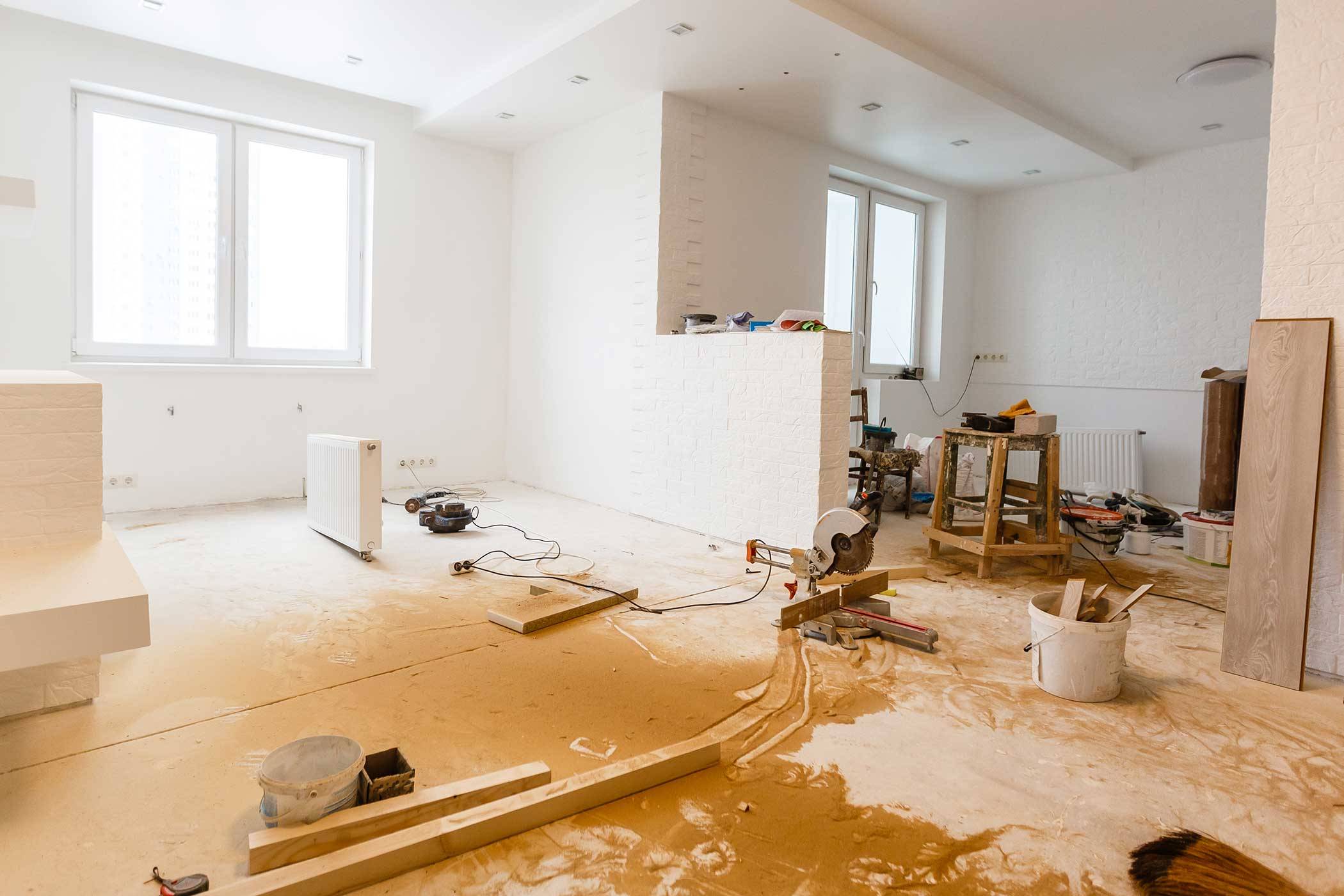

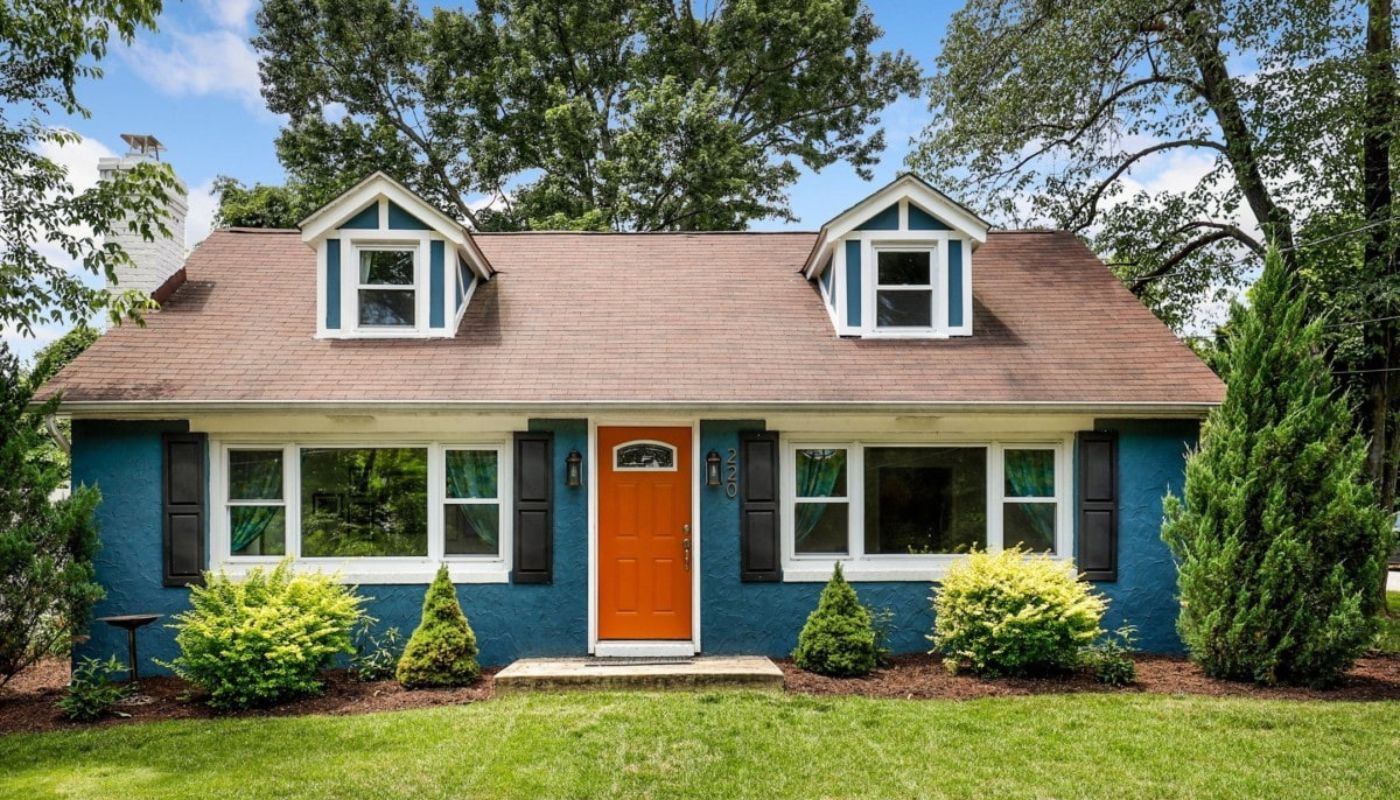
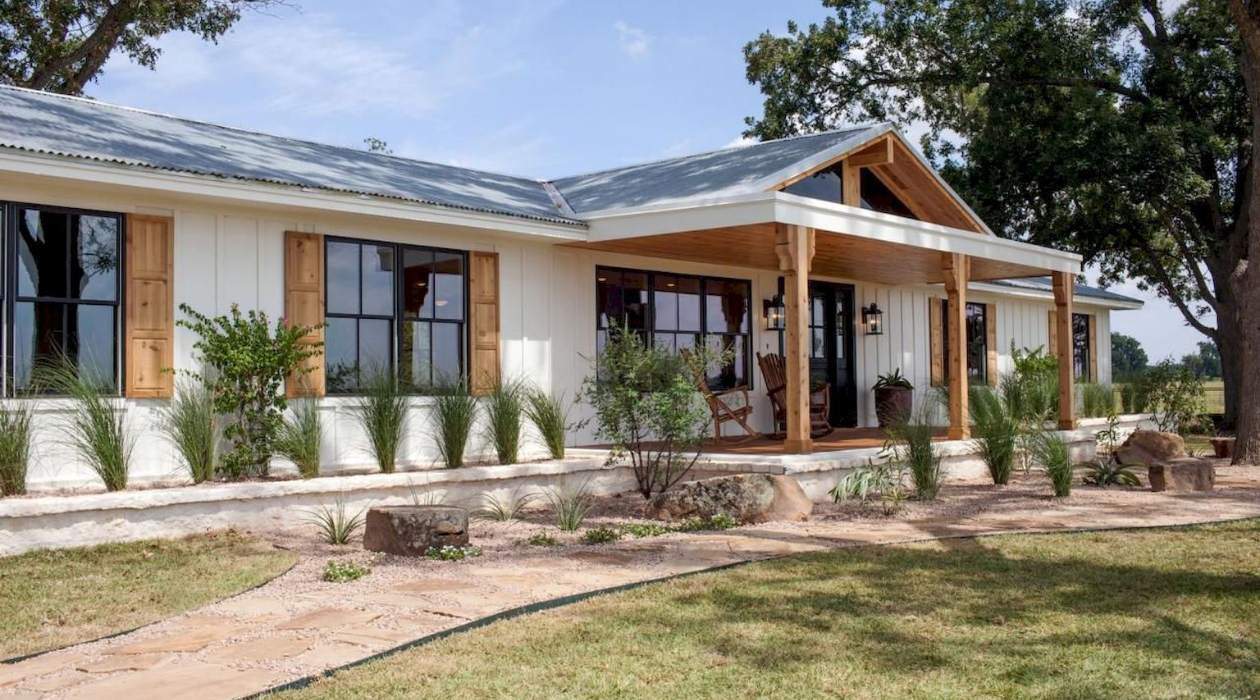
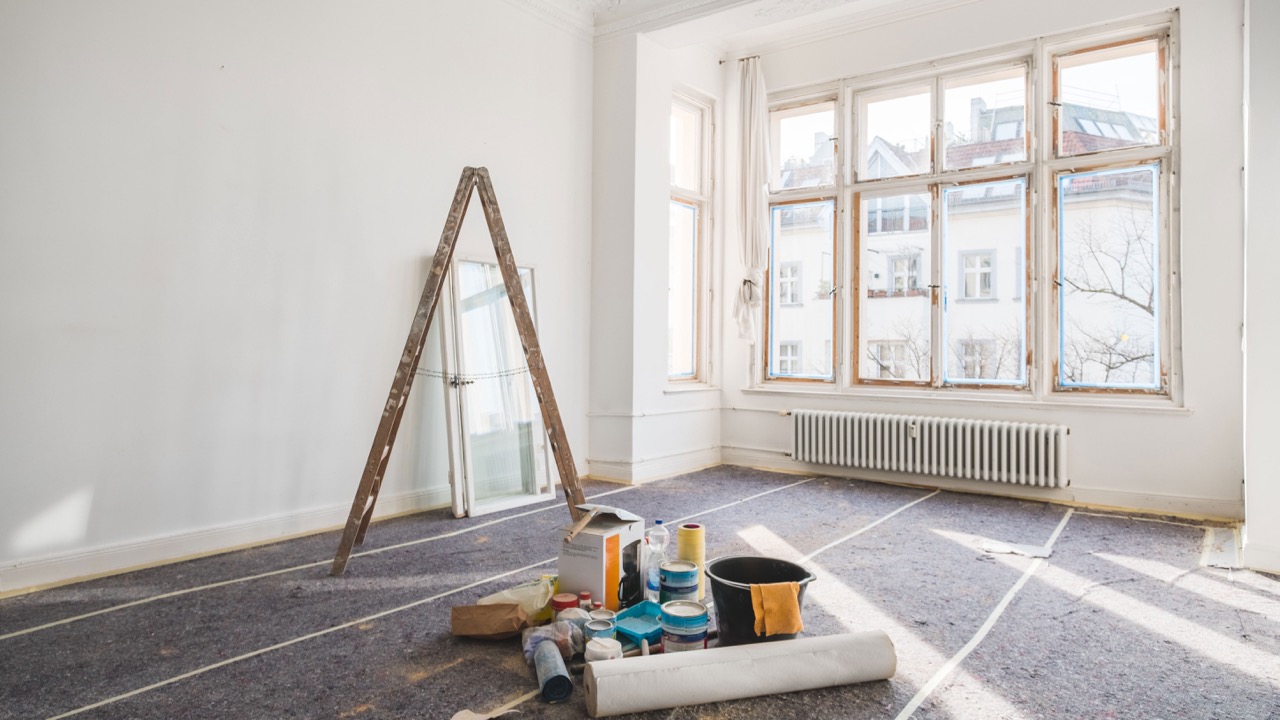


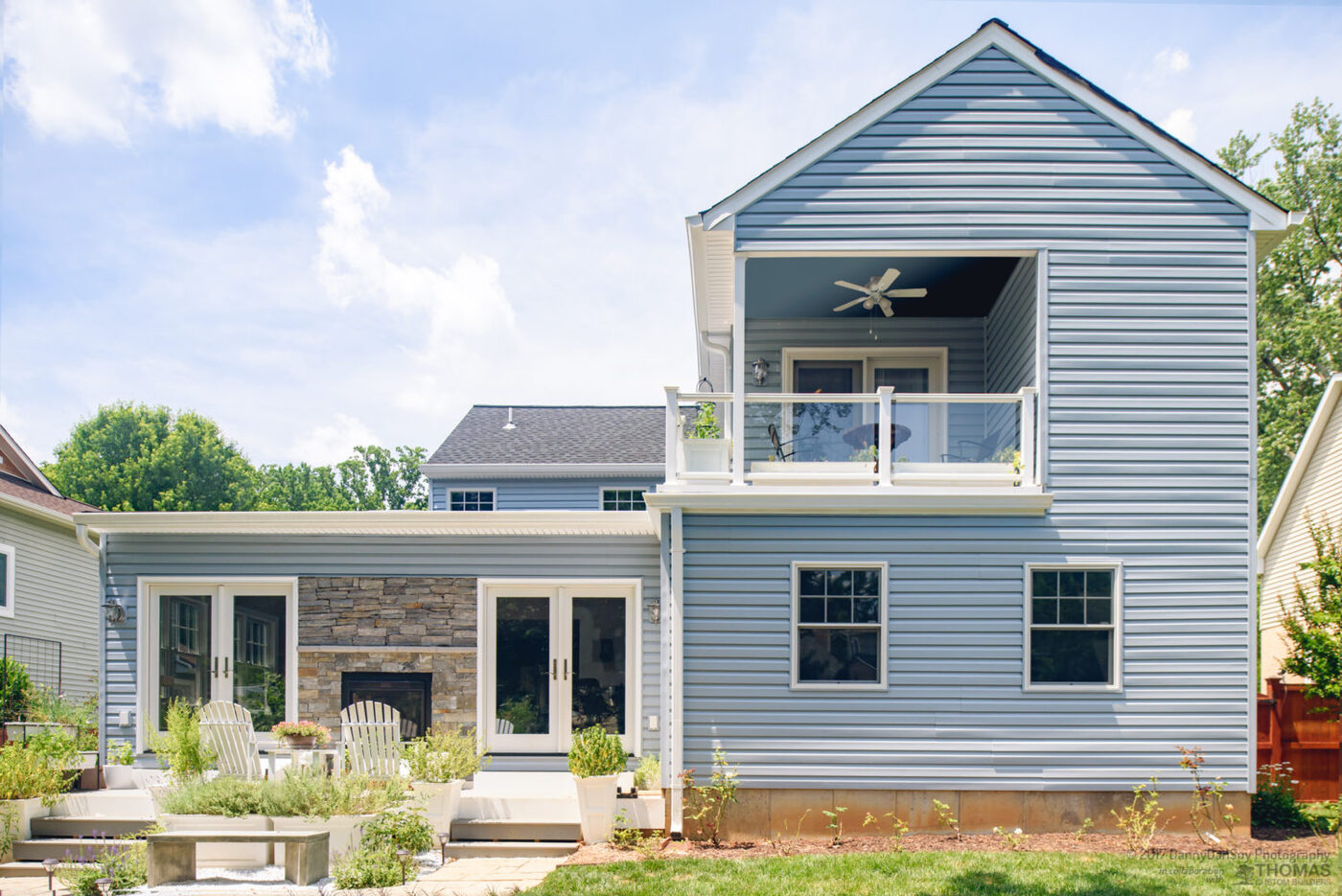
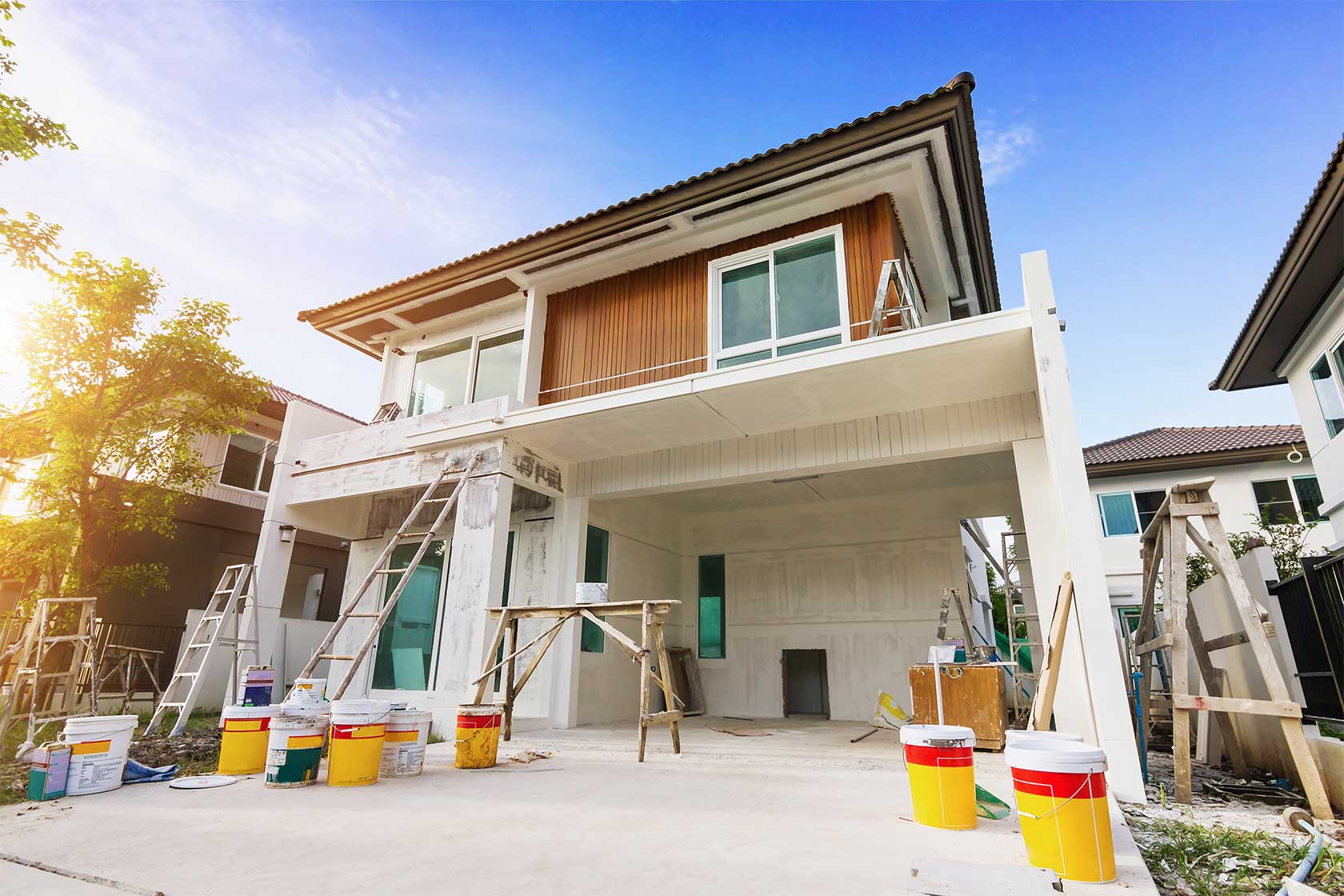


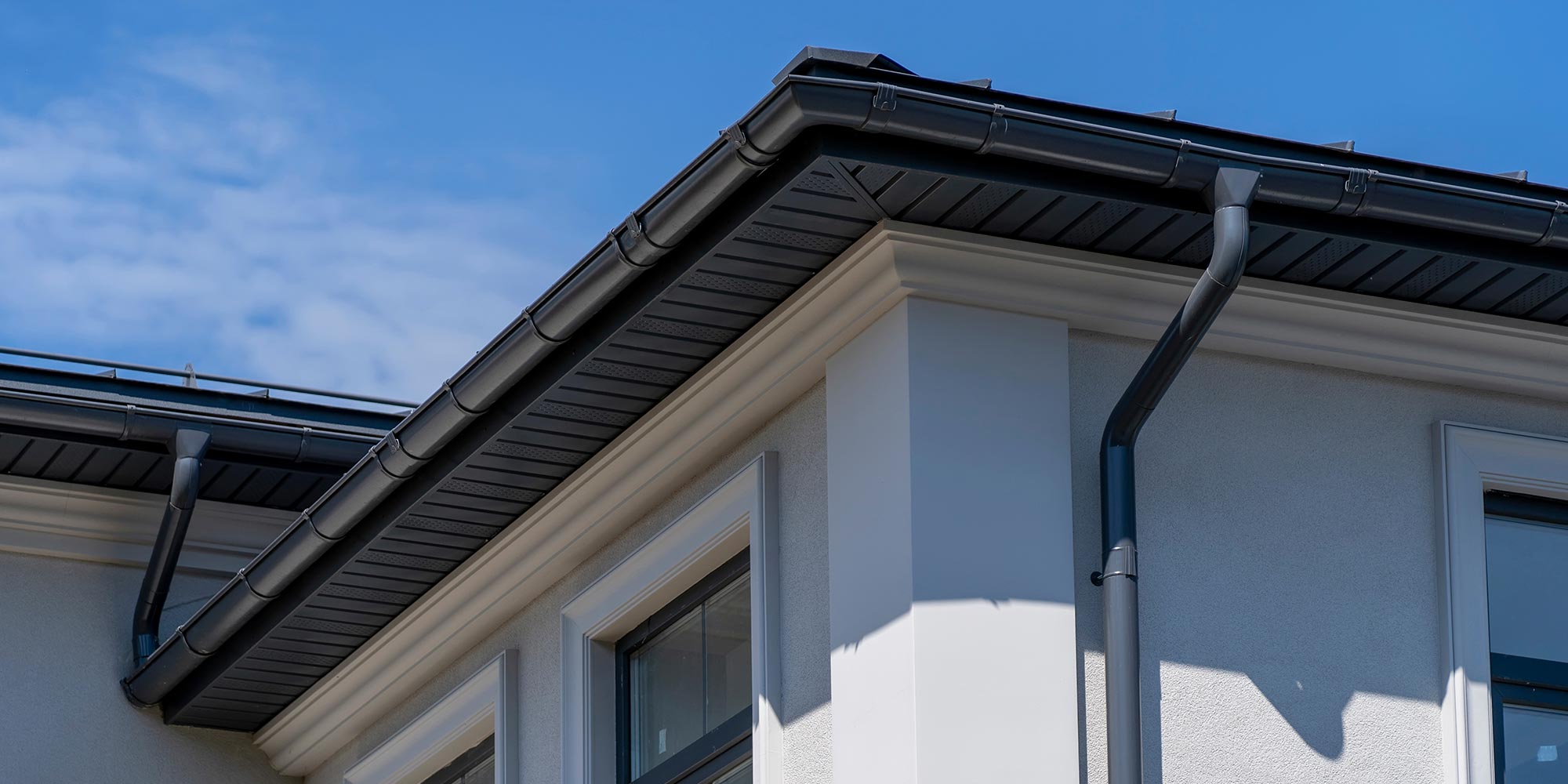

0 thoughts on “Where To Start With House Renovation”